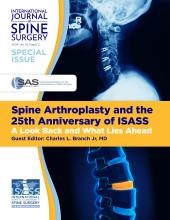ABSTRACT
Background Regional and segmental changes of the lumbar spine have previously been described as patients transition from standing to sitting; however, alignment changes in the cervical and thoracic spine have yet to be investigated. So, the aim of this study was to assess cervical and thoracic regional and segmental changes in patients with thoracolumbar deformity versus a nondeformed thoracolumbar spine population.
Methods This study was a retrospective cohort study of a single center's database of full-body stereoradiographic imaging and clinical data. Patients were ≥ 18 years old with nondeformed spines (nondegenerative, nondeformity spinal pathologies) or thoracolumbar deformity (ASD: PI-LL > 10°). Patients were propensity-score matched for age and maximum hip osteoarthritis grade and were stratified by Scoliosis Research Society (SRS)–Schwab classification by PI-LL, SVA, and PT. Patients with lumbar transitional anatomy or fusions were excluded. Outcome measures included changes between standing and sitting in global alignment parameters: sagittal vertical axis (SVA), pelvic incidence minus lumbar lordosis (PI-LL), pelivc tilt (PT), thoracic kyphosis, cervical alignment, cervical SVA, C2-C7 lordosis (CL), T1 slop minus CL (TS-CL), and segmental alignment from C2 to T12. Another analysis was performed using patients with cervical and thoracic segmental measurements.
Results A total of 338 patients were included (202 nondeformity, 136 ASD). After propensity-score matching, 162 patients were included (81 nondeformity, 81 ASD). When categorized by SRS-Schwab classification, all nondeformity patients were nonpathologically grouped for PI-LL, SVA, and PT, whereas ASD patients had mix of moderately and markedly deformed modifiers. There were significant differences in pelvic and global spinal alignment changes from standing to sitting between nondeformity and ASD patients, particularly for SVA (nondeformed: 49.5 mm versus ASD: 27.4 mm; P < .001) and PI-LL (20.12° versus 13.01°, P < .001). With application of the Schwab classification system upon the cohort, PI-LL (P = .040) and SVA (P = .007) for severely classified deformity patients had significantly less positional alignment change. In an additional analysis of patients with segmental measurements from C2 to T12, nondeformity patients showed significant mobility of T2-T3 (−0.99° to −0.54°, P = .023), T6-T7 (−3.39° to −2.89°, P = .032), T7-T8 (−2.68° to −2.23°, P = .048), and T10-T11 (0.31° to 0.097°, P = .006) segments from standing to sitting. ASD patients showed mobility of the C6-C7 (1.76° to 3.45°, P < .001) and T11-T12 (0.98° to 0.54°, P = 0.014) from standing to sitting. The degree of mobility between nondeformity and ASD patients was significantly different in C6-C7 (−0.18° versus 1.69°, P = .003), T2-T3 (0.45° versus −0.27°, P = .034), and T10-T11 (0.45° versus −0.30°, P = .001) segments. With application of the Schwab modifier system upon the cohort, mobility was significant in the C6-C7 (nondeformed: 0.18° versus moderately deformed: 2.12° versus markedly deformed: 0.92°, P = .039), T2-T3 (0.45° versus −0.08° versus −0.63°, P = .020), T6-T7 (0.48° versus 0.36° versus −1.85°, P = .007), and T10-T11 (0.45° versus −0.21° versus −0.23°, P = .009) segments.
Conclusions Nondeformity patients and ASD patients have significant differences in mobility of global spinopelvic parameters as well as segmental regions in the cervical and thoracic spine between sitting and standing. This study aids in our understanding of flexibility and compensatory mechanisms in deformity patients, as well as the possible impact on unfused segments when considering deformity corrective surgery.
Footnotes
Disclosures and COI: No funding was received in relation to the creation of this work. Each institution obtained approval from their local Institutional Review Board to enroll patients in the prospective database and informed consent was obtained from each patient. Peter G. Passias, MD, reports personal consulting fees for Spinewave, Zimmer Biomet, and Medicrea outside the submitted work. Virginie Lafage, PhD, reports Depuy Synthes paid lectures, Nuvasive paid lectures, K2M paid lectures, Medtronic paid lectures, and Nemaris board member and shareholder.
- ©International Society for the Advancement of Spine Surgery







